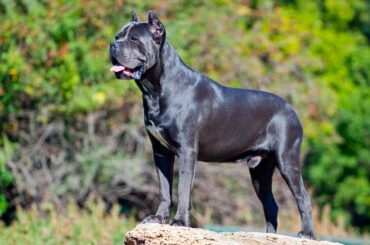Antifreeze is highly dangerous to animals and can lead to kidney failure, which can be fatal. However, pets enjoy the liquid and will happily consume it if given the opportunity. Antifreeze poisoning is among the most prevalent causes of death in small animals, owing to its widespread availability in homes. When antifreeze leaks from a car’s radiator, it is licked off the ground and consumed by a pet, resulting in antifreeze poisoning. Antifreeze is poisoned by the toxin ethylene glycol.
As a result, dogs will ingest large amounts of ethylene glycol before becoming repelled by the aftertaste. The brain, liver, and kidneys are all affected by antifreeze toxicity. Engine coolant and hydraulic braking fluids both include ethylene glycol.

Antifreeze is extremely dangerous to dogs and can result in major health problems if you don’t move swiftly. The component that poisons the dog is ethylene glycol, which is commonly used in antifreeze because it lowers the freezing point of water. Antifreeze is distinguished by its vivid green color, yet it is not made of ethylene glycol, which is a colorless, odorless, and pleasant liquid.
The biggest problem with antifreeze is that such a small amount can be exceedingly poisonous, if not lethal, to a dog. While it tastes delicious to your dog at first, it has a very bitter aftertaste, especially since they eat it so quickly and it only takes a small quantity to make them sick.
Antifreeze is present in a variety of household products, including paint, solvents, ink, home solar systems, and wood stains, in addition to your automobile’s engine. It’s also utilized in hydraulic brake fluids, windshield, radiator fluid, motor oil, and other liquids required in car maintenance. This indicates that the drug is almost certainly present in your home, whether you are aware of it or not.
Table of Contents
How Antifreeze occur in the body of the dog
When ethylene glycol is ingested by a dog, it is metabolized in the dog’s liver within a few hours, resulting in the formation of oxalic acid. Calcium oxalate crystals are formed when this material binds to calcium in the blood.

These crystals will eventually make their way to the dog’s kidneys, causing the dog to become very sick. This can induce renal failure and possibly death if left untreated. Due to the very hazardous nature of ethylene glycol, dog owners must exercise extreme caution while using it and be especially cautious about where they store it. Poisoning from ethylene glycol can happen fast once the dog takes it, and it will happen in phases.
Symptoms of Antifreeze in dog
The symptoms of antifreeze poisoning vary depending on how soon after intake they occur. The pet may get melancholy, wobble when moving, and have convulsions in the first several hours following consumption. They may drink a lot of water, pee a lot, and vomit a lot. The pet may appear to be doing better for a day or two before rapidly deteriorating as its kidneys fail. Depression and vomiting are two symptoms of renal failure. The volume of urine they produce will frequently drop to a minuscule amount. It can eventually lead to death after being in a coma.

Diagnosis of Antifreeze in dog
The veterinarian will do a comprehensive physical examination on your pet, bearing in mind the history of symptoms as well as any incidences that may have contributed to the development of this condition. A comprehensive blood analysis, along with a chemical blood test and a urinalysis, will be performed. If feasible, your veterinarian will test the vomit or stool, since this will help the veterinarian diagnose the type of poisoning and speed up your dog’s therapy. The therapy will also be determined by the medical history you provide, so be as accurate as possible.
Management and prevention of Antifreeze in dog
The purpose of antifreeze poisoning treatment is to prevent ethylene glycol from being absorbed into the dog’s body. Because the chemical absorption of the ethylene glycol may not have started yet, your dog’s chances are considerably increased if you can start therapy within five hours of intake.

To avoid this from happening, the first step will be to remove the chemical from the dog’s system. Intravenous fluids, as well as increased blood flow and urine elimination, may be given by your veterinarian to treat or prevent dehydration. This will aid in the removal of ethylene glycol before it causes too much harm. Giving your dog a basic hydrogen peroxide solution might also cause vomiting; once your dog has vomited, you can’t do it again.
By following a few simple steps, you may easily prevent your dog from becoming poisoned by antifreeze. Be aware of what items in your home contain ethylene glycol, and keep the containers well locked and out of reach of your dog.
If you ever use antifreeze on your own, make every effort not to spill any, but if you do, make sure to clean it up carefully and promptly. Make careful to properly dispose of any used containers.




